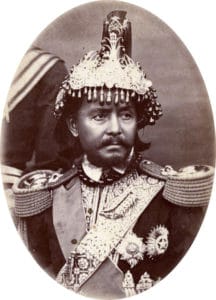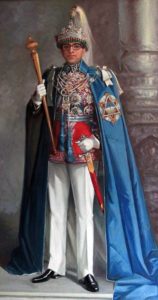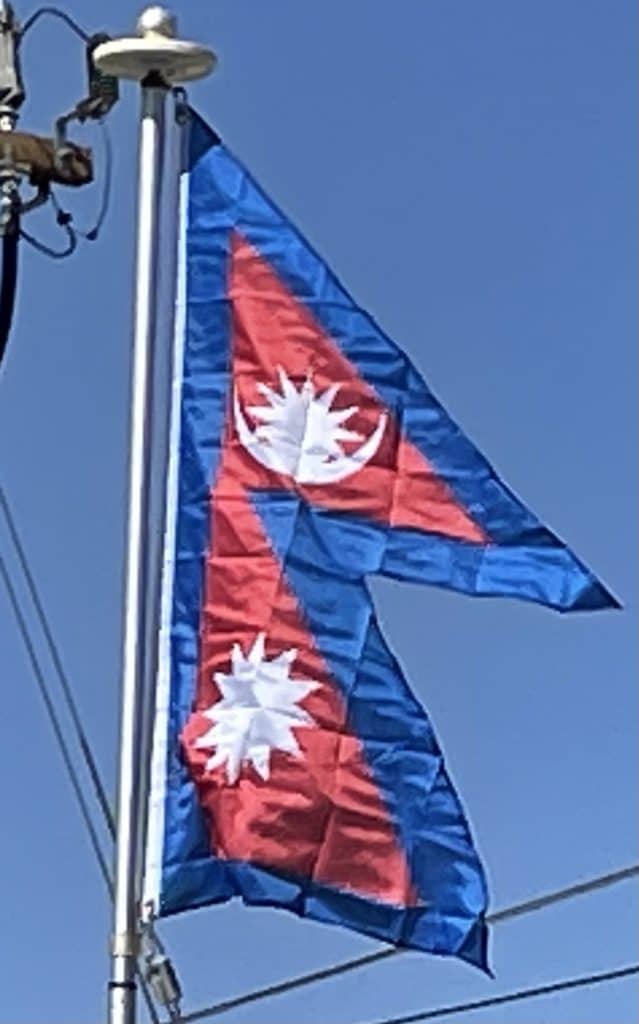Factionalism inside the royal family led to a period of instability. In 1846, a plot was discovered revealing that the reigning queen had planned to overthrow Jung Bahadur Kunwar, a fast-rising military leader. This led to the Kot massacre; armed clashes between military personnel and administrators loyal to the queen led to the execution of several hundred princes and chieftains around the country. Bir Narsingh Kunwar emerged victoriously and founded the Rana dynasty, and came to be known as Jung Bahadur Rana.

The king was made a titular figure, and the post of Prime Minister was made powerful and hereditary. The Ranas were staunchly pro-British and assisted them during the Indian Rebellion of 1857 (and later in both World Wars). In 1860 some parts of the western Terai region were gifted to Nepal by the British as a friendly gesture because of her military help to sustain British control in India during the rebellion (known as Naya Muluk, new country). In 1923, the United Kingdom and Nepal formally signed an agreement of friendship that superseded the Sugauli Treaty of 1816.
Nepal After 1950:
In the late 1940s, newly emerging pro-democracy movements and political parties in Nepal were critical of the Rana autocracy. Following the success of Indian Independence Movement which Nepalese activists had taken part in, with India’s support and cooperation of King Tribhuvan, Nepali Congress was successful in toppling the Rana regime, establishing a parliamentary democracy. After a decade of power wrangling between the king and the government, King Mahendra (ruled 1955–1972) scrapped the democratic experiment in 1960, and a “partyless” Panchayat system was created to govern Nepal. The political parties were banned and politicians imprisoned or exiled.

The Panchayat rule modernized the country, introducing reforms and developing infrastructure, but curtailed liberties and imposed heavy censorship. In 1990, the People’s Movement forced King Birendra (ruled 1972–2001) to accept constitutional reforms and to establish a multiparty democracy.
In 1996, the Maoist Party started a violent bid to replace the royal parliamentary system with a people’s republic. This led to the long Nepali Civil War and more than 16,000 deaths. With the death of both the King and the Crown Prince in a massacre in the royal palace, King Birendra’s brother Gyanendra inherited the throne in 2001 and subsequently assumed full executive powers aiming to quash the Maoist insurgency himself.
The Maoist Party joined mainstream politics following the success of the peaceful democratic revolution of 2006; Nepal became a secular state, and on 28 May 2008, it was declared a republic, ending its time-honored status as the world’s only Hindu Kingdom. The country’s new designation as the Federal Democratic Republic of Nepal was submitted to the United Nations on 4 August 2008, and later confirmed by the constitution. After a decade of instability and internal strife which saw two constituent assembly elections, the new constitution was promulgated on 20 September 2015, making Nepal a federal democratic republic divided into seven provinces.
Geography:
Nepal is of roughly trapezoidal shape, about 800 kilometers (500 mi) long and 200 kilometers (120 mi) wide, with an area of 147,516 km2 (56,956 sq mi).
